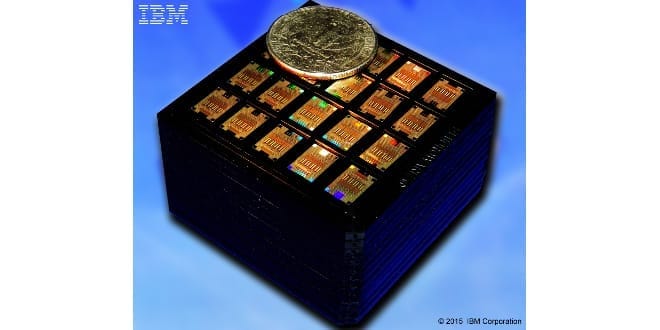IBM recently announced a new chip that can use flashes of light, rather than electrical signals, to transmit data. This development is the culmination of nearly a decade of research by IBM, stretching all the way back to 2006. This silicon photonics chip has optical components side-by-side with electrical circuits, on a single chip.
For years, optical transmission has far outstripped electrical transmission in bandwidth. If you want the fastest speed for transferring data across a network, fiber optics is the way to go. However the components within a computer are electronic, which means computers still require copper wire internally to transmit electronic signals. The breakthrough with this new chip is that it is capable of sending and receiving optical transmissions. With this new technology, copper wire is no longer necessary; the electronic components are now able to communicate with each other across fiber cables. Optical transmissions are not just faster, but also consume less energy than electronic ones, so there's another big reason to switch over to this new technology.
IBM believes this new technology will be of great use for data centers that offer cloud computing and other services that process large volumes of data. Right now the bottleneck is transferring data between computing components within a system. This new technology will greatly increase the speed and responsiveness of data centers that have to process vast quantities of data. As data centers grow bigger, they demand high-speed communication between devices over larger and larger distances. The silicon photonics chip can deal with this demand; IBM has tested its capabilities to send and receive messages at distances up to 2 kilometers in length.
IBM managed to manufacture the silicon photonics chip using standard chip fabrication procedures, which means this technology can easily be mass-produced in existing factories. Since there is no need to invest in new fabrication plants to produce these chips, we can expect this technology to be available for commercial use in the near future. When it's finally available on the market, this chip is sure to cause a revolution in the processing of "big data".
Do you think this technology will have a large impact on the how "big data" is processed? Leave your comments below.







